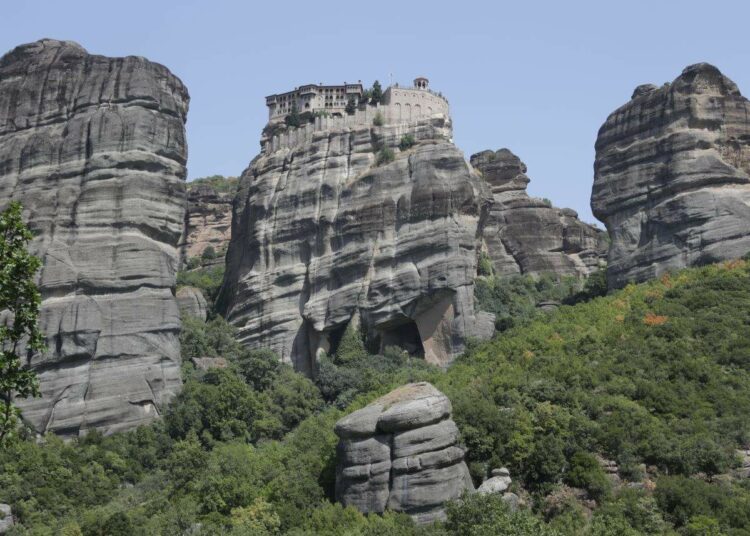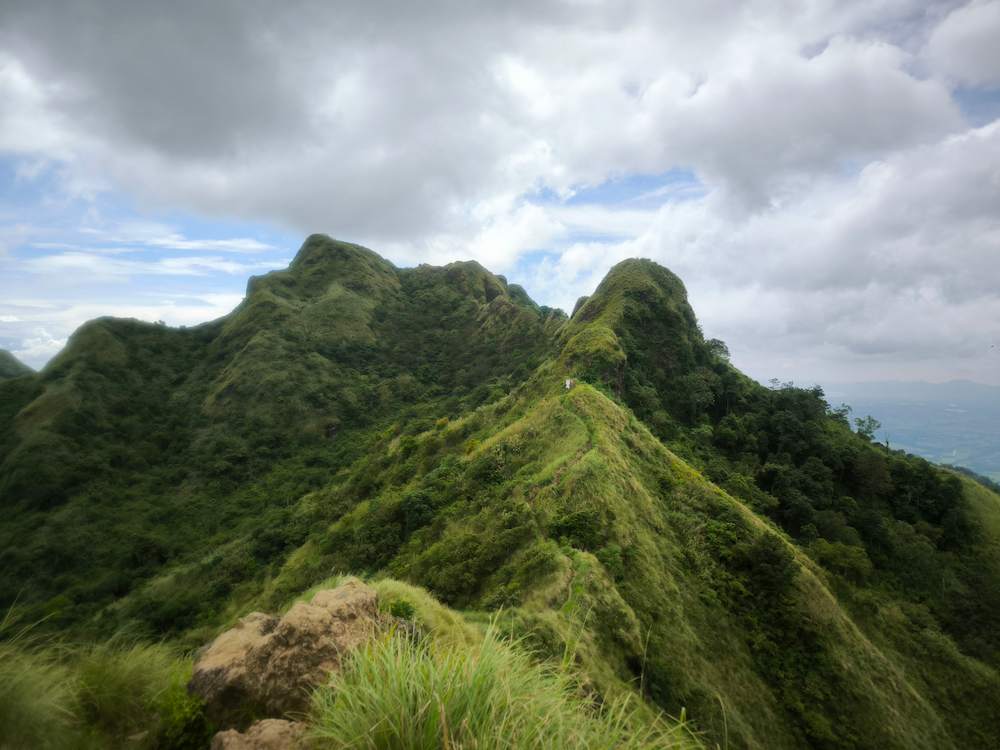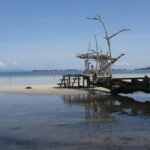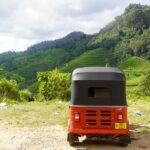General information about Meteora
I got off the train in Kalabaka with my mouth open as the backdrop of the rock monasteries of Meteora rose up behind the village. The height at which the “floating” monasteries were built in the 14th century is incredible. Meteora roughly means “floating in the air” and refers to the monasteries that seem to float in the air in a light haze. The Unesco World Heritage Site is one of the highlights on the Greek mainland.
The monasteries of Meteora
Of the 24 monasteries in Meteora, only 6 are inhabited today. The remaining monasteries are either in danger of collapsing or hardly accessible. The monasteries cost an entrance fee of €3 each. To enter the monasteries, shoulders and knees must be covered. Suitable trousers or clothes to cover the shoulders can be borrowed or bought on site (2 € for the trousers). The trousers can then also be used for the other monasteries. Most monasteries have a drinking water tap where you can refill your bottle. Each of the monasteries has a rest day on a different day, so you always have the opportunity to see most of it.
Agia Triada:
The Agia Triada or Holy Trinity is one of the six monasteries still inhabited today and was built between 1458 and 1476. . It was only in 1925 that the stairway leading up to the monastery was carved in stone. Before that, the only way to get there was by winches and rope ladders. Agia Triada became particularly famous because it is the setting for the James Bond film “On a Deadly Mission”.
Closed on Thursdays
Admission: 3 €
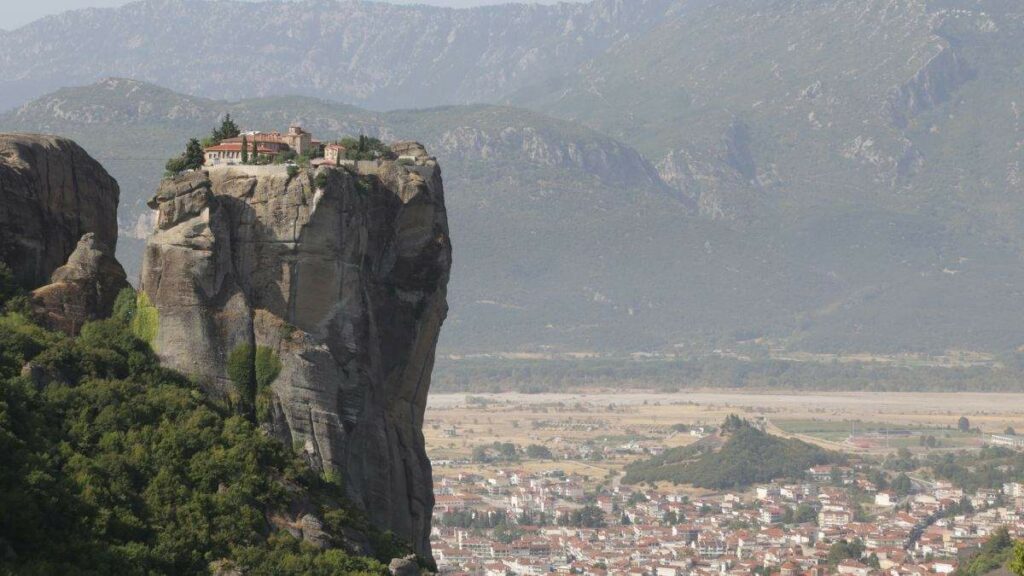
Agia Stéphanos
The second monastery on the way was founded in 1312. However, there is evidence that the rock has been inhabited since 1192. In 1961, the monastery was converted into a women’s monastery. You can also fill up your water bottle in the monastery.
Closed on Mondays
Admission : 3 €
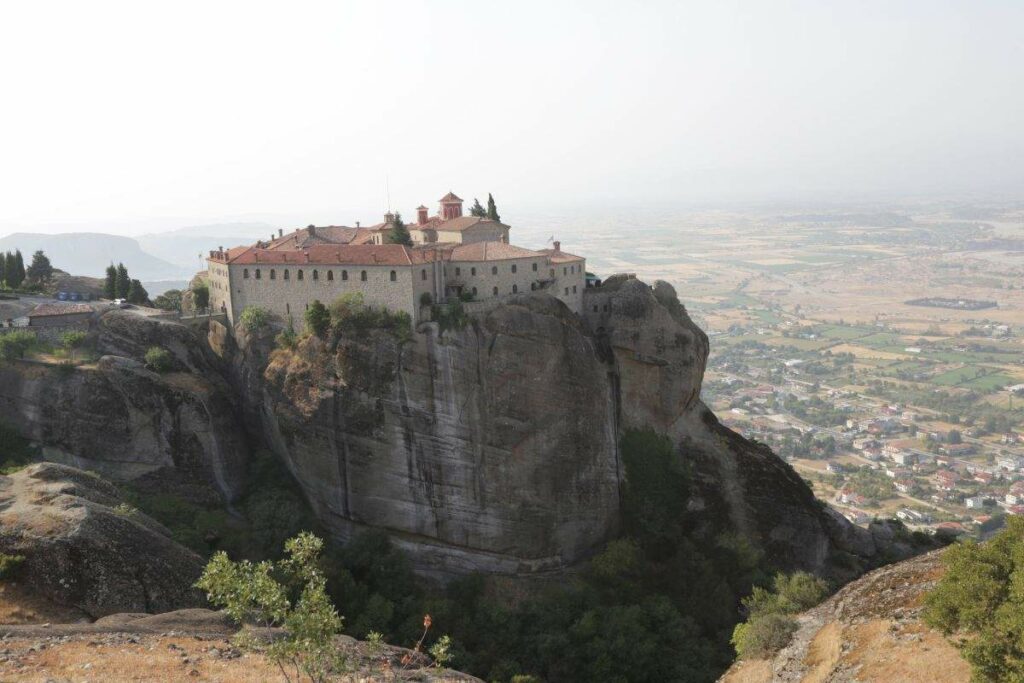
Rousanou
The date of the foundation has not been handed down exactly. Depending on the source, the date is estimated between 1288 and 1545. The monks at Rousanou lived in a cenobitic system (explanation). After some looting and raids on the monastery, it was initially closed in 1940. Shortly afterwards, the monastery was to be reopened. Since then it has been a women’s monastery. The frescoes from the 16th century are particularly worth seeing.
Closed on Wednesdays
Admission: 3 €
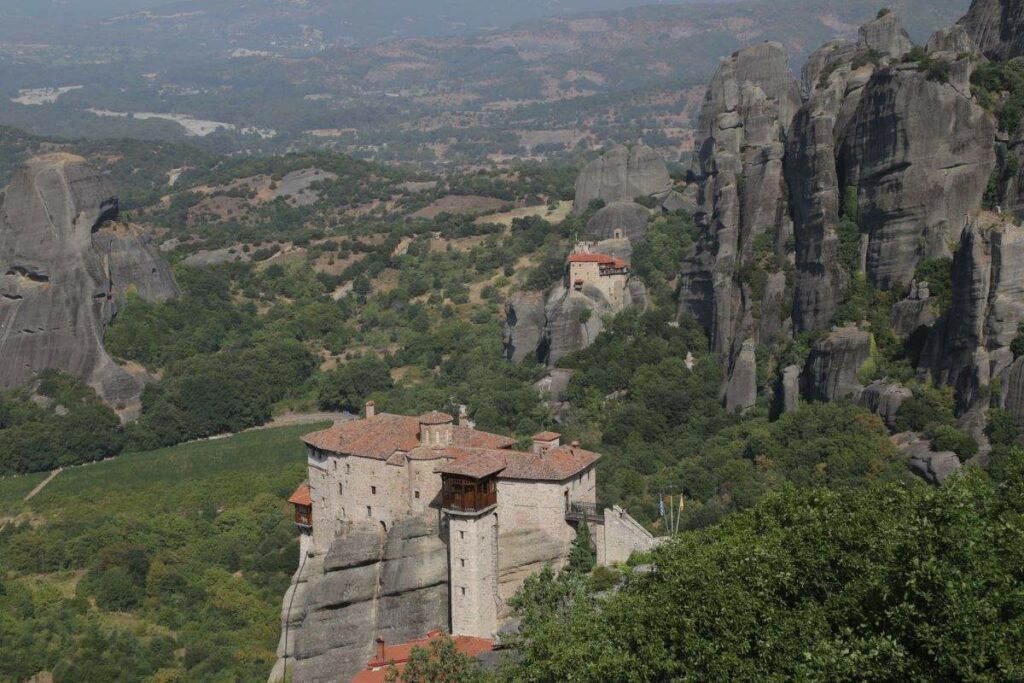
Varlaam
Similar to Agia Stéphanos, the rock was already inhabited before the monastery was built. The rock was first inhabited by a hermit from the middle of the 14th century before the construction of the monastery began and was completed around 1518. Before the construction of the monastery, the rock was uninhabited for several years. Just as in Rousanou, the Cenobitic way of life was laid here. Here you can visit the museum, the church and a shop selling products from the monastery and souvenirs.
Closed on Fridays
Admission: 3 €
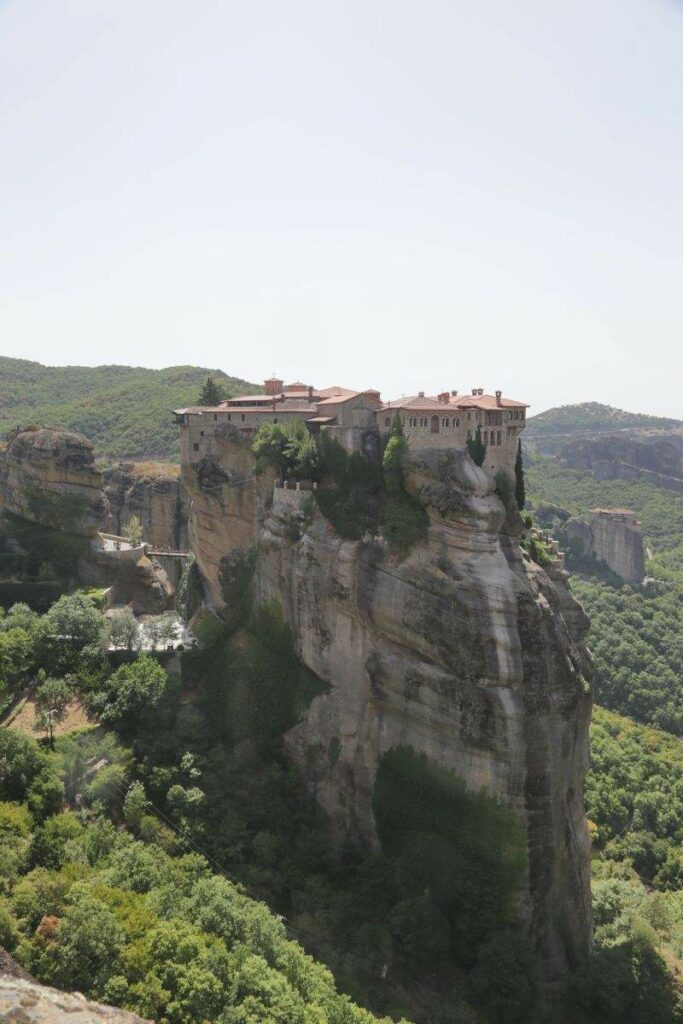
Metamorphosis Di
The largest of the monasteries, with almost 60,000 square metres, lies 613 m above sea level and was once only accessible via a rope ladder and a winch with a net. Since 1923, there has been a stone staircase leading through a tunnel to reach the monastery.
Closed on Thursdays
Admission: 3 €
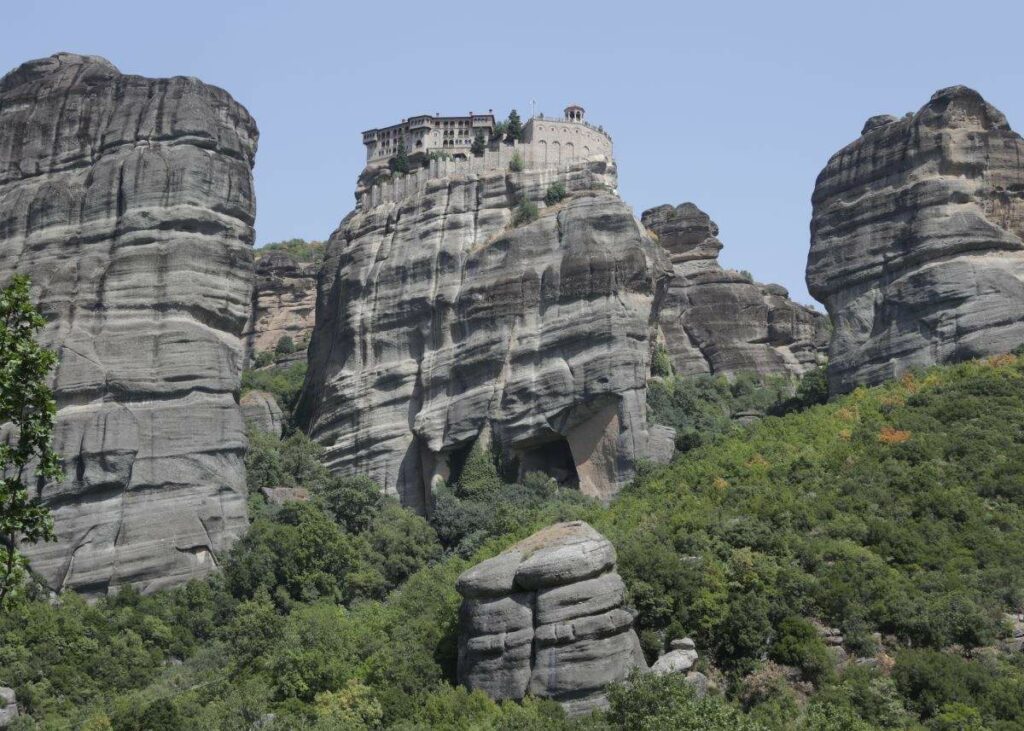
St. Nicholas Anapafsas
The rather small monastery is situated lower than the other monasteries. In the church there are some skulls of monks who used to live in the monastery.
Top 5 tips for your visit to Meteora
- Get up early and be at the first monastery before the crowds of tourists
- Be sure to cover knees and shoulders.
- You can fill up your water bottle at most monasteries.
- If possible, avoid the main travel months of July & August or weekends.
- With a bit of luck, you may encounter Greek land tortoises on the way up.
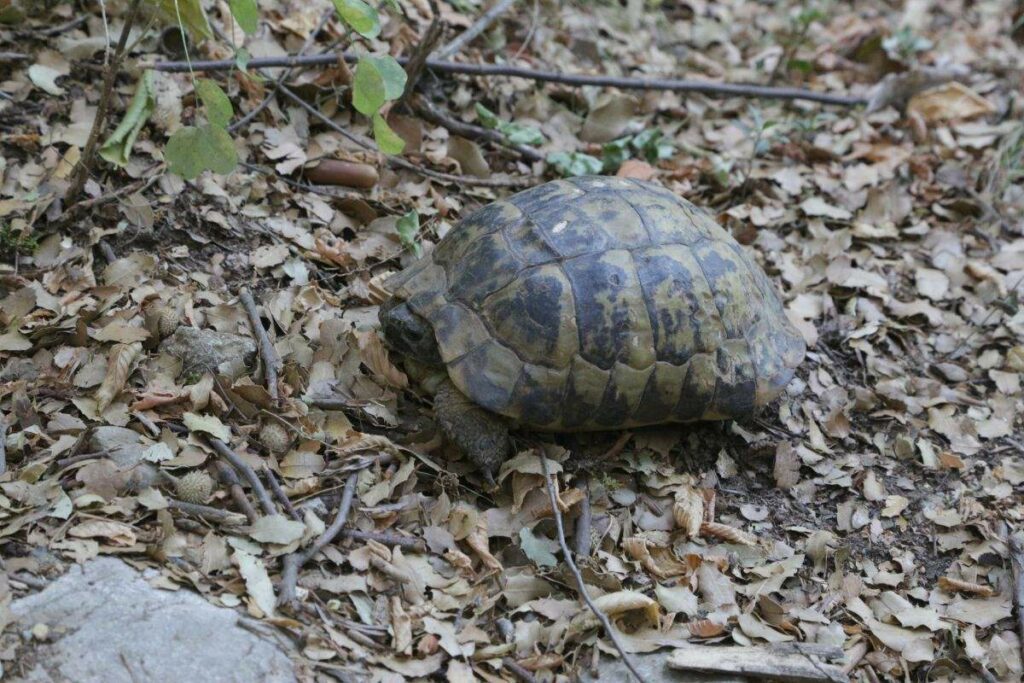
Climbing to the monasteries
By walking:
The route to the monasteries is relatively simple. I recommend you plan for about 6 hours, including breaks and visits. The hiking trail itself is easy to do, even if it is a pity that you mostly walk along the road.
If you are staying overnight in Kalabaka, just walk towards the rocks, the paths converge in a funnel shape until you finally find the signposts of the path that leads you up to the rocks. I recommend starting at 7:15 am. Then you can walk in a relatively relaxed manner and arrive there shortly before the opening of the Agia Triada and can visit it. After you have visited the Agia Triada, walk back a few metres and continue along the path. When you reach the road, first turn right to get to Agios Stéfanos (takes about 20 minutes). Then follow the road back and after a few kilometres you will pass Rousanou, Varlaam and Metamorphosis. After visiting the monasteries, there is a path down through the rocks at the Metamorphosis car park. On the way down you will pass the monastery of St. Nicholas Anapafsas. Take the path and then follow the road down into the valley via Kastraki and back to Kalabaka.
By bus:
Every morning at 9:00 there is a bus that goes from Kalabaka up the road to the monasteries. The ride costs €2. The disadvantage is that all passengers start at about the same time in the same place. Since there is really only one main route, you are more or less on the bus the whole time.
By car:
Each of the monasteries is easy to reach by car and offers sufficient parking space. The advantage of arriving by car is that the order of the monasteries can be adapted to the number of visitors. For example, you can start at one of the middle monasteries if it is not very busy and adjust the order accordingly.
Dress code in the monasteries of Meteora
Knees and shoulders must be officially covered if you want to enter the monasteries. I have made the experience that it is sometimes taken more or less strictly, depending on who is sitting at the cash desk. If you want to be on the safe side, cover your knees and shoulders. Alternatively, you can buy “disposable” trousers on the spot (I think they cost 2 €), which you can then wear in the other monasteries. For women, there are skirts to borrow.
How to get to Meteora
Athens to Kalabaka:
From Larissa Station in Athens there are about 4 trains a day to Meteora. The duration is between 3.5 and 4 hours. In the morning there is a direct train, otherwise you usually have to change trains in Palaeofarsalos. The difficulty is that the stops on the ticket are in Greek letters, as are some stations. I recommend asking the people on the spot or trying to get the desired stop from the loudspeakers. Besides the train, there are also buses, but they are a bit more expensive. The train costs about 30 € and the bus 40 €. The bus takes 4 hours and 45 minutes.
Thessaloniki to Kalabaka
There are several trains a day from Thessaloniki to Kalabaka and back. The journey takes about 3 hours. The cost is about €20. There is also a change of trains in Palaeofarsalos on this route.
Ioannina nach Kalabaka
There are bus connections here, but usually only one bus per day. In any case, you should book this one at least one day before departure, as they sell out super fast.
[WPSM_AC id=7031]


